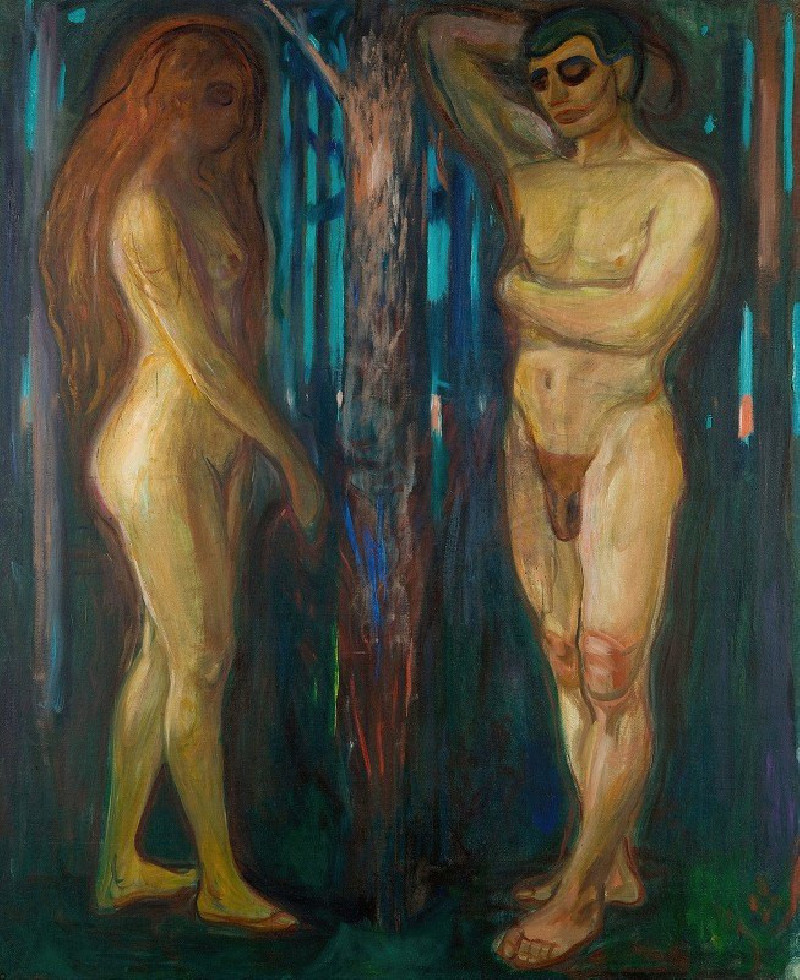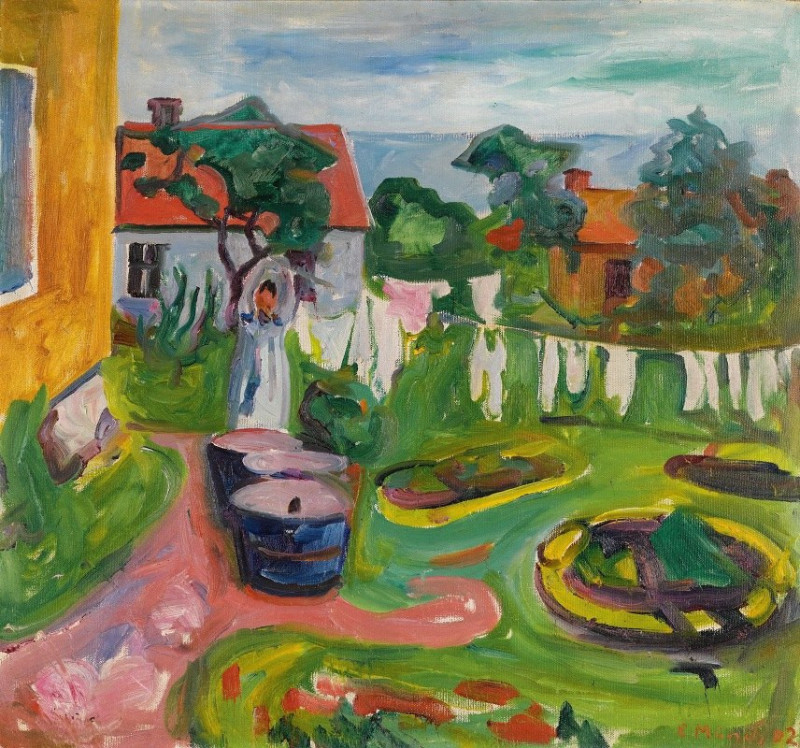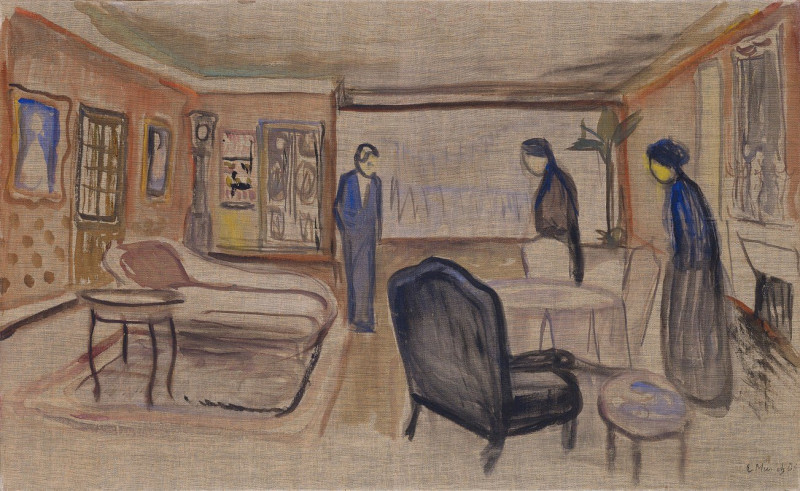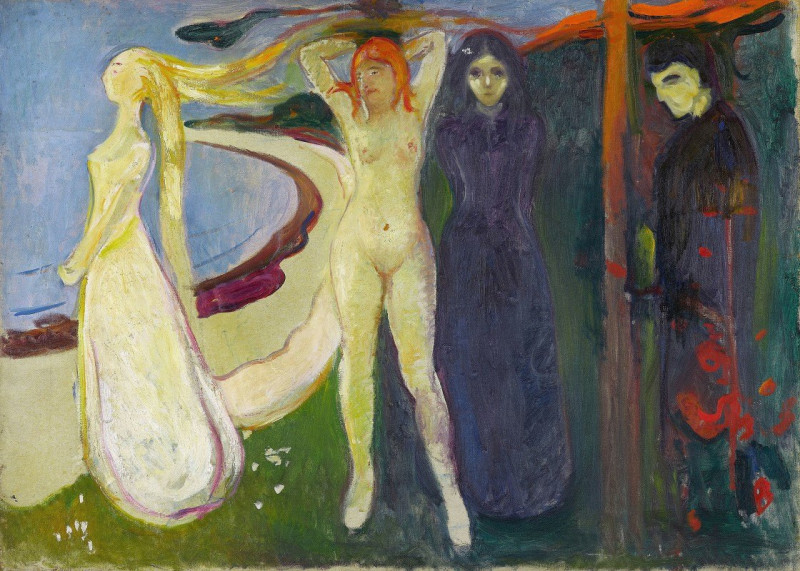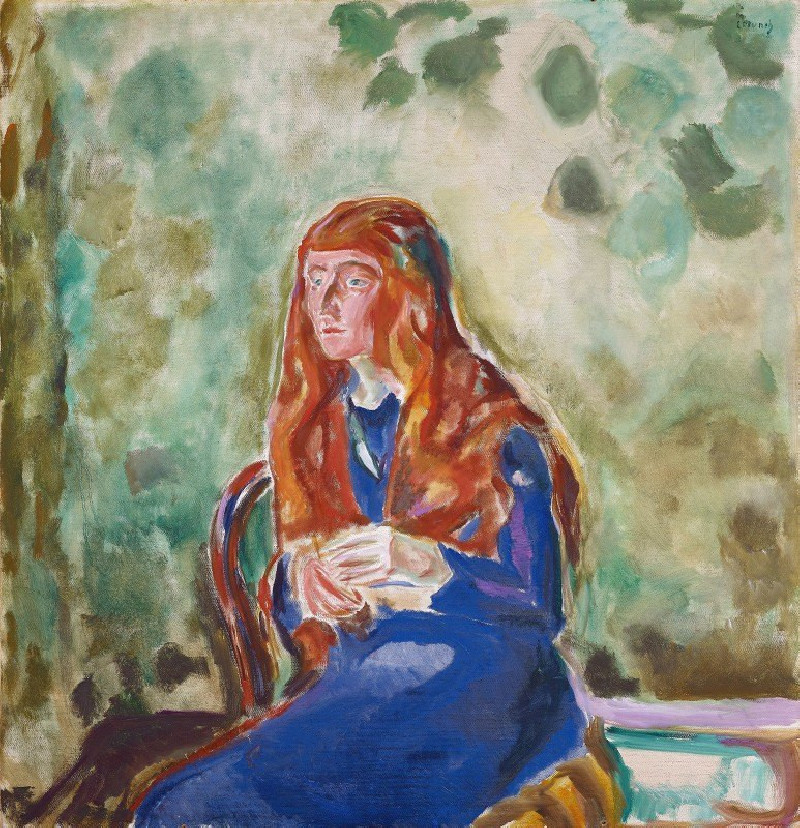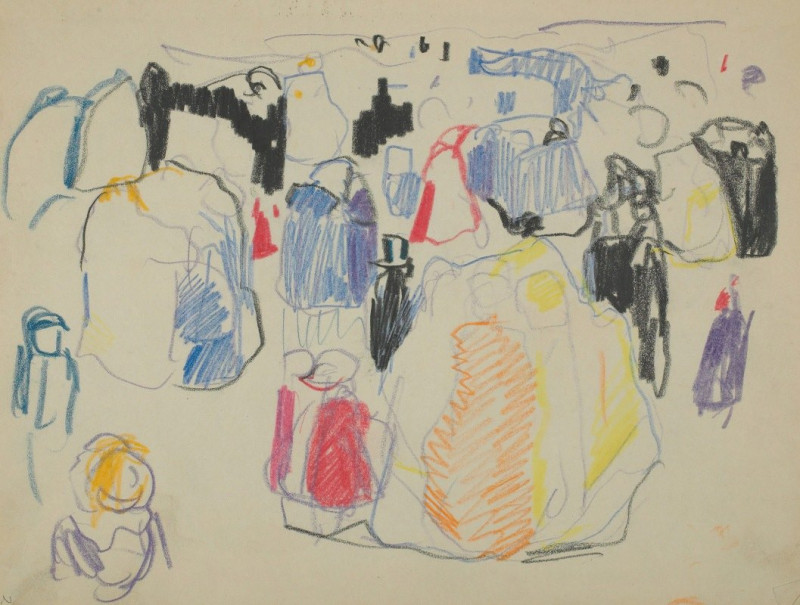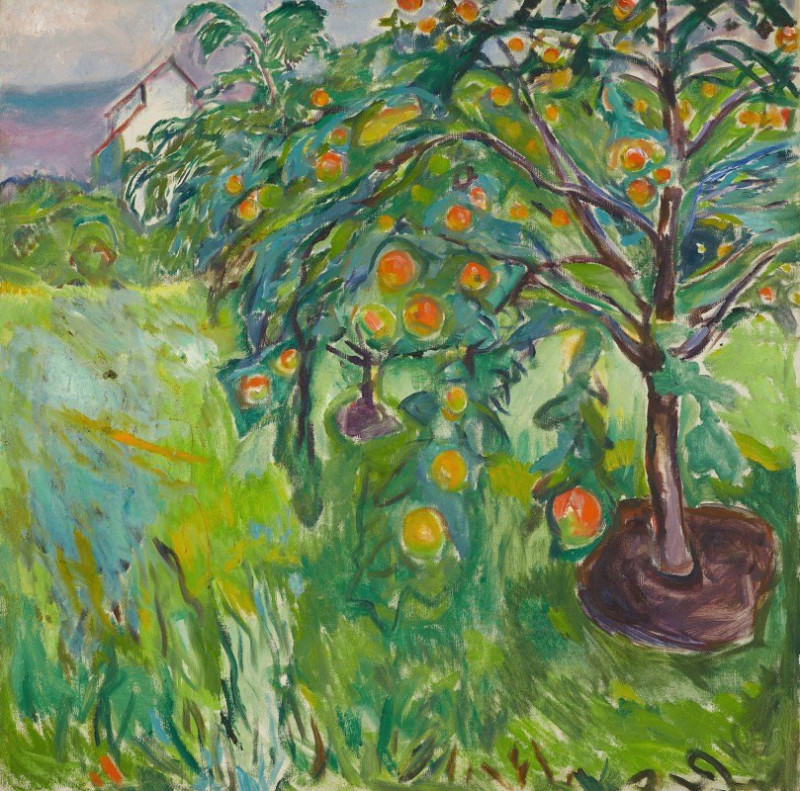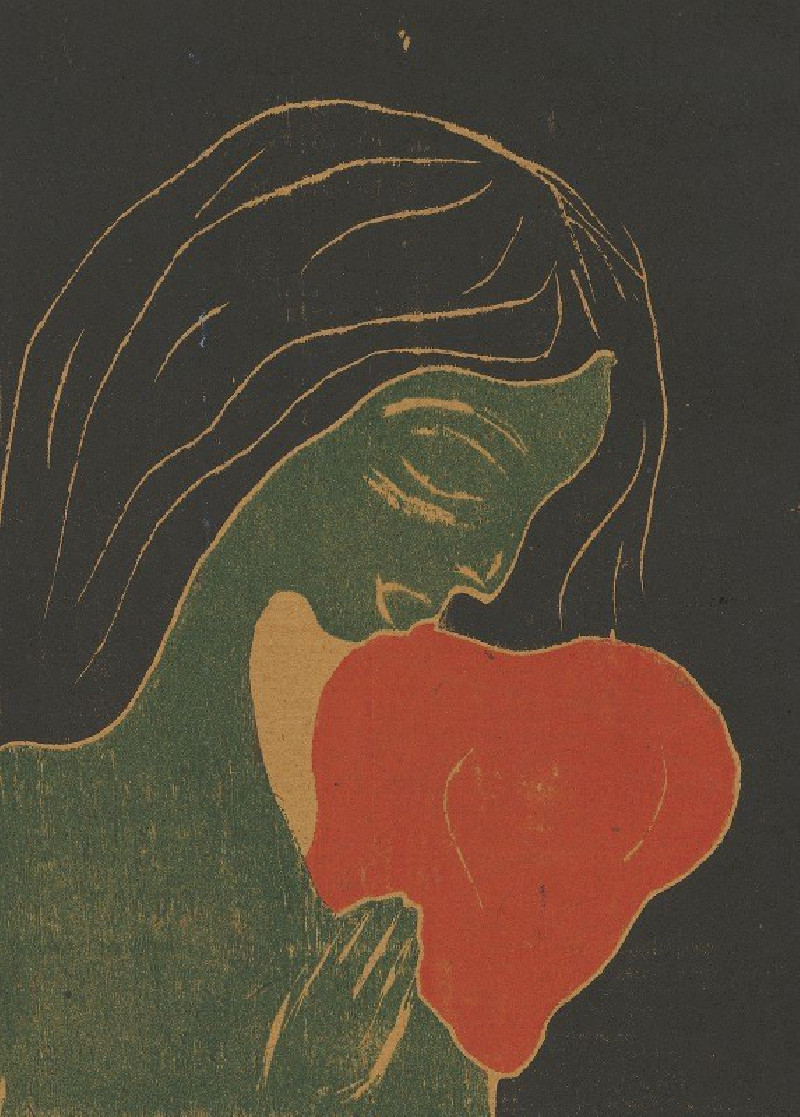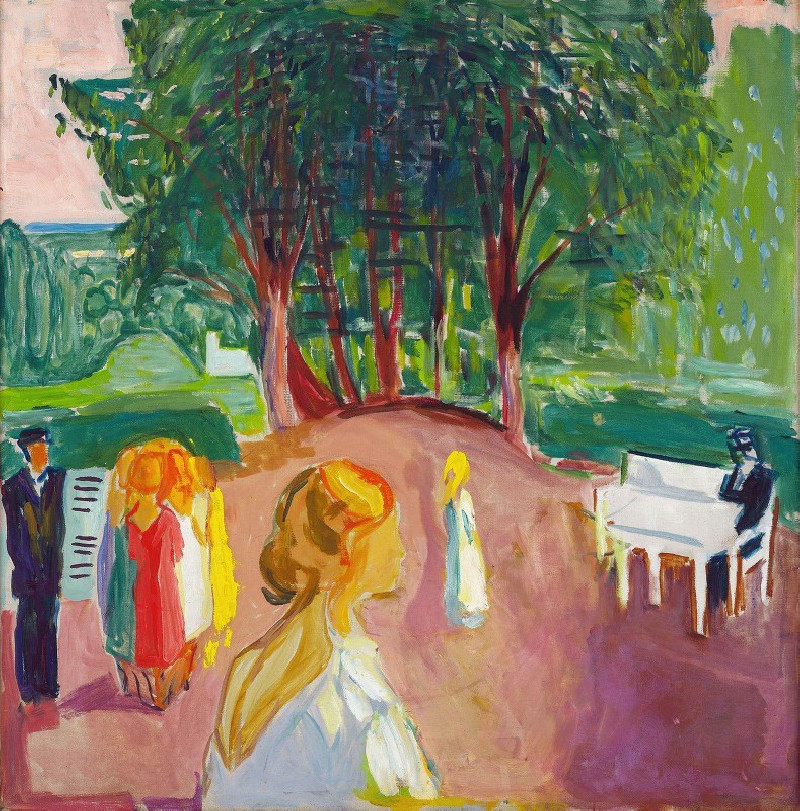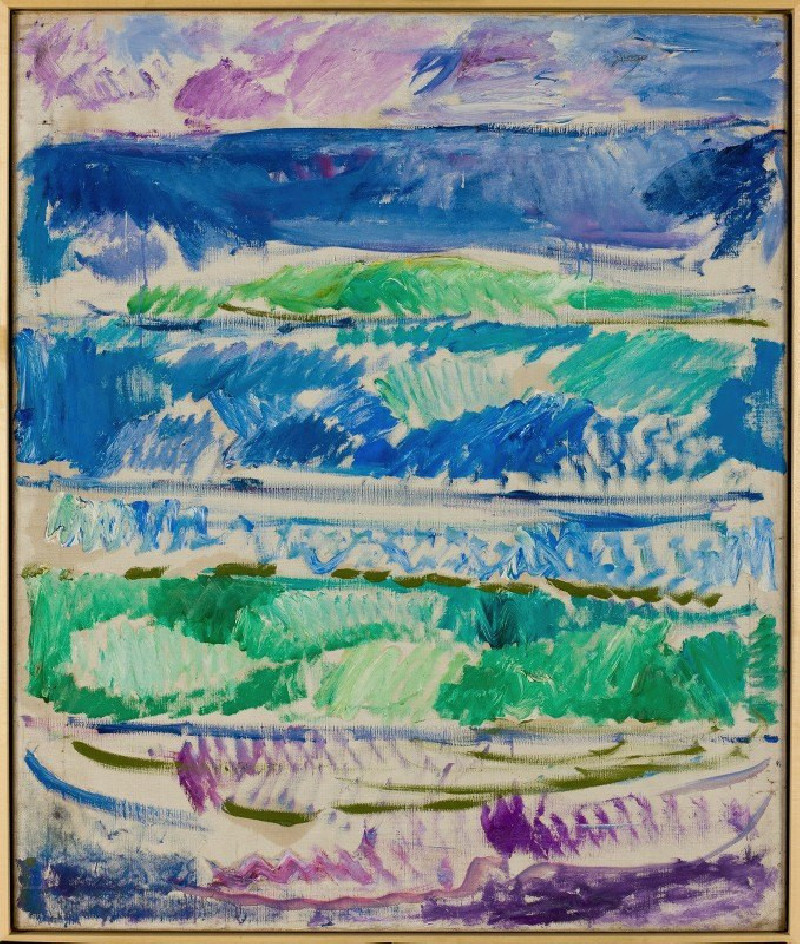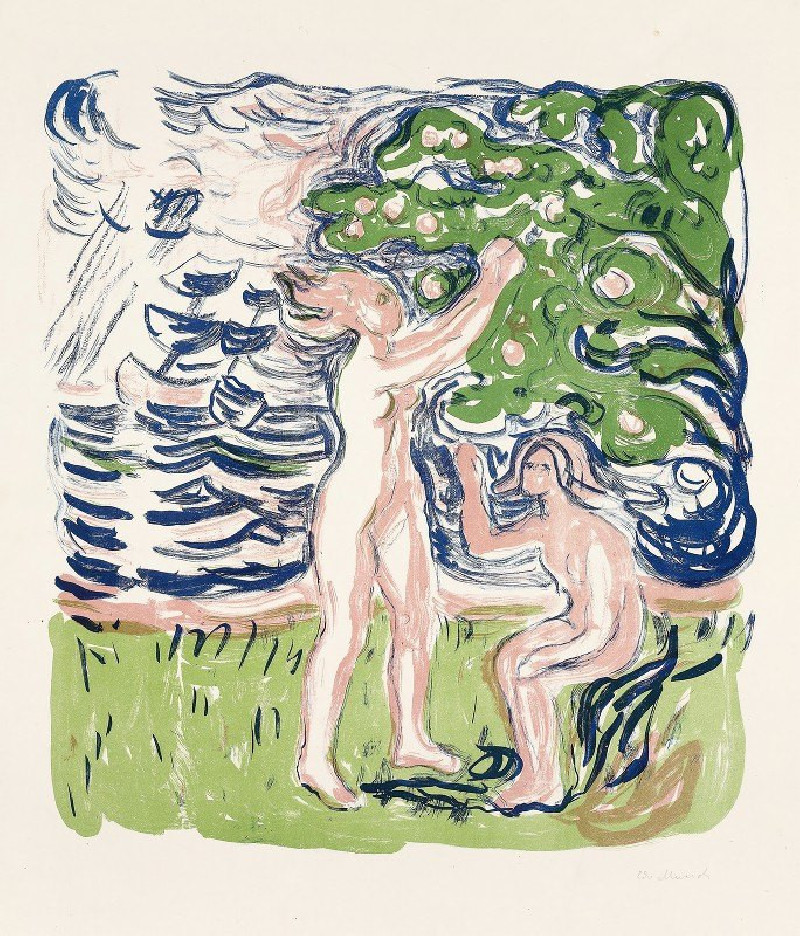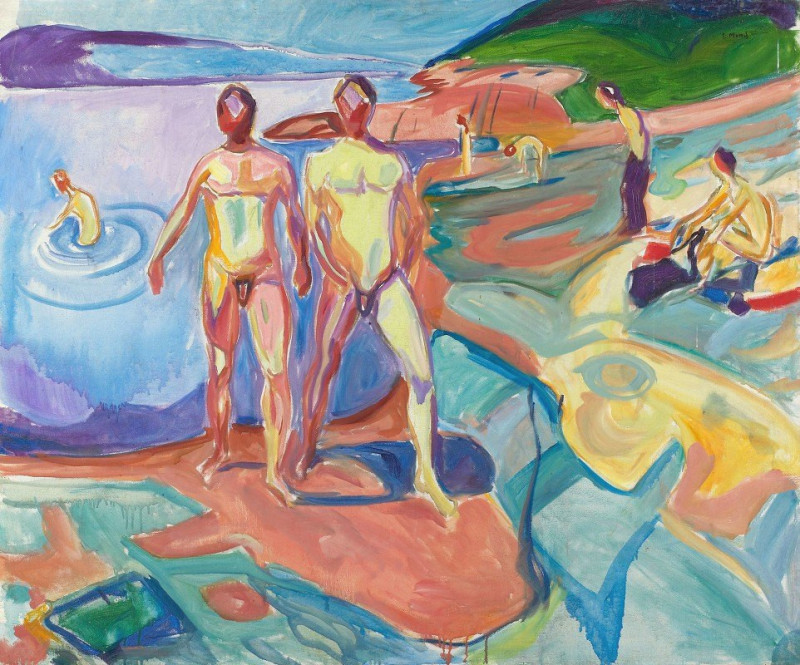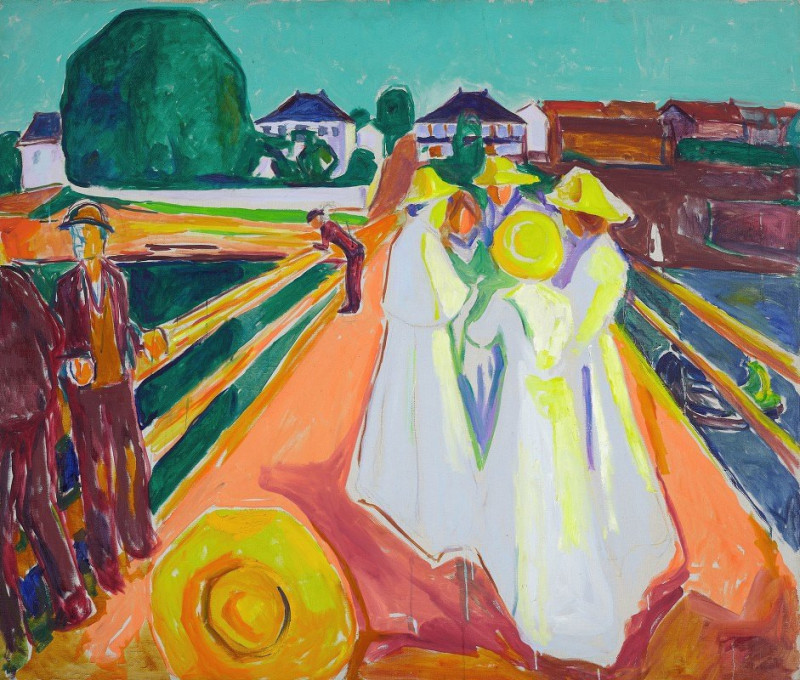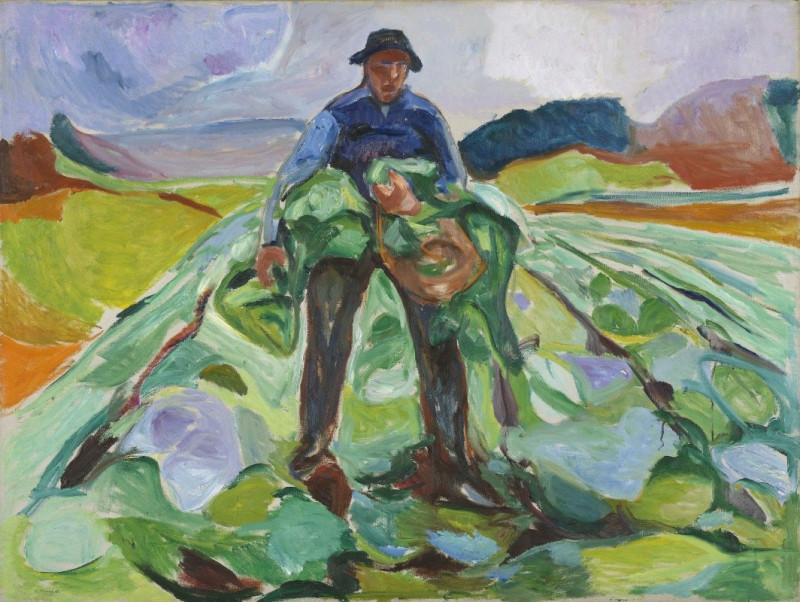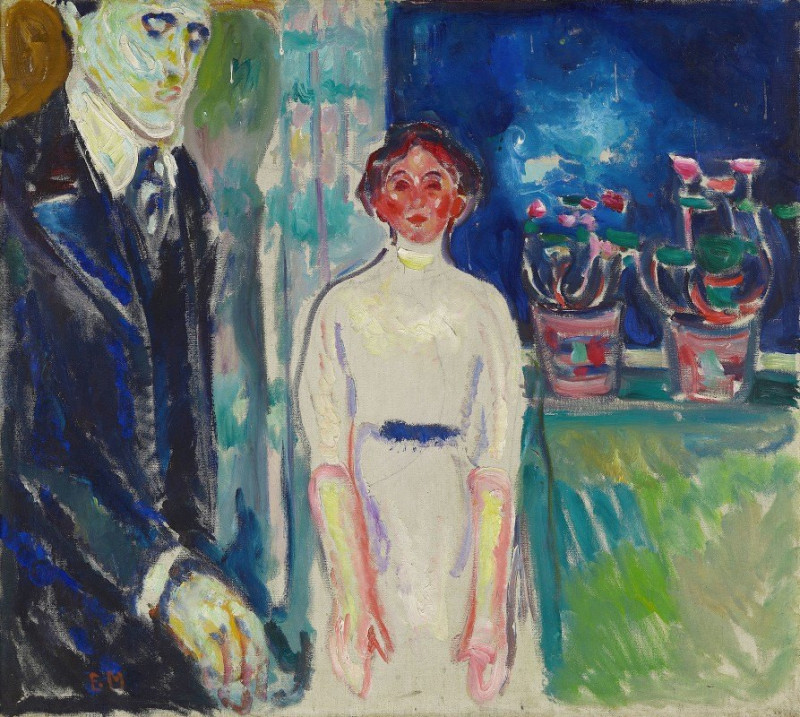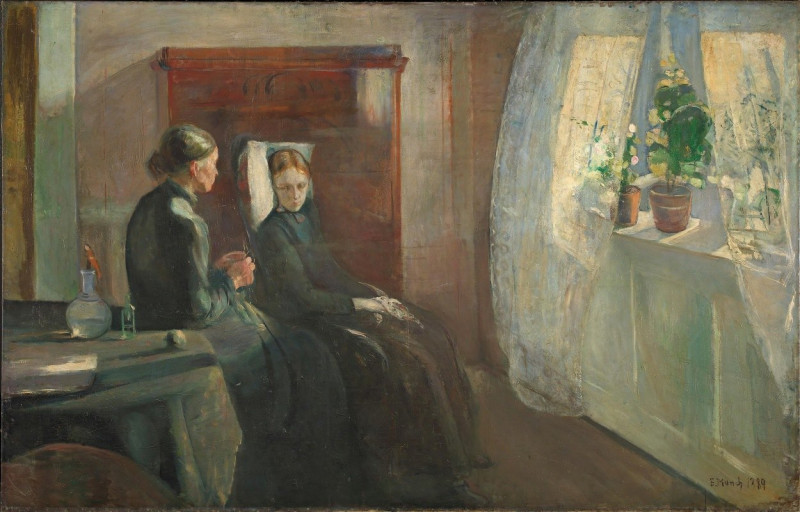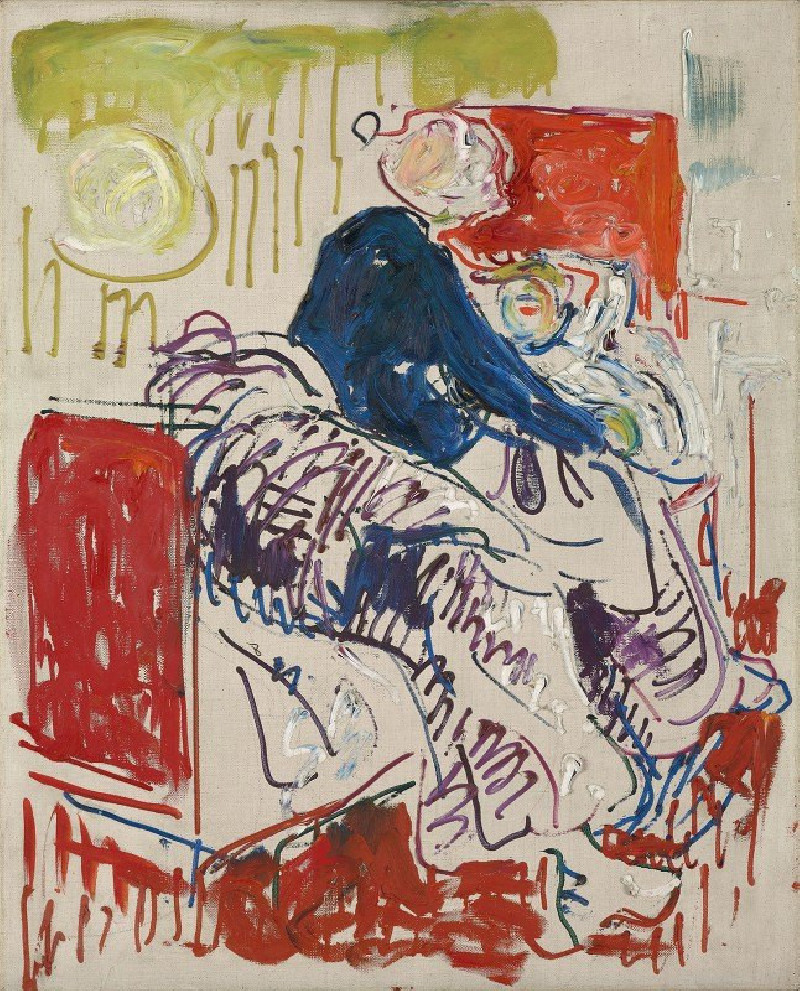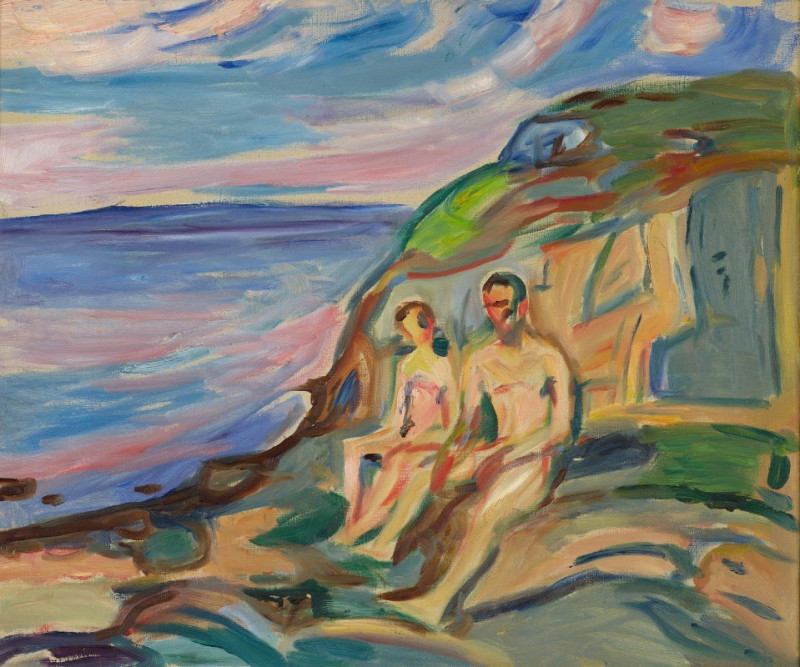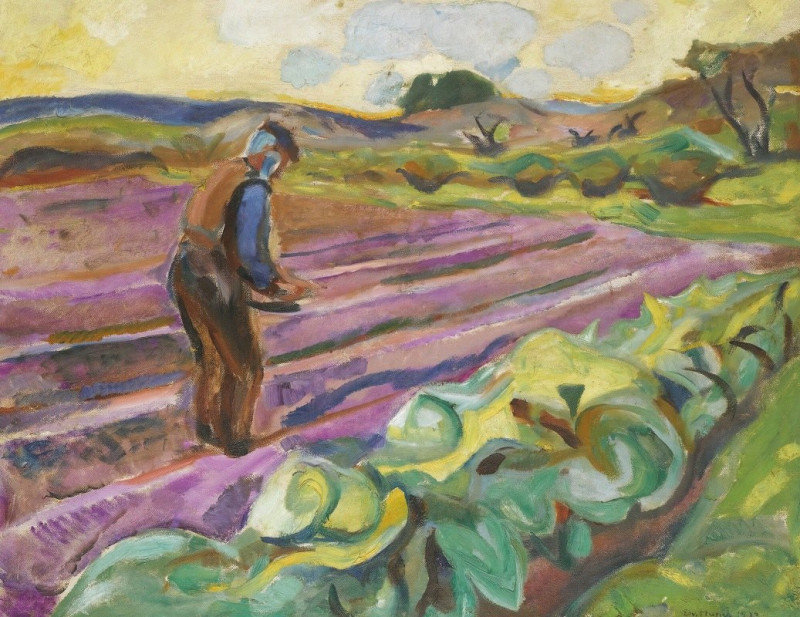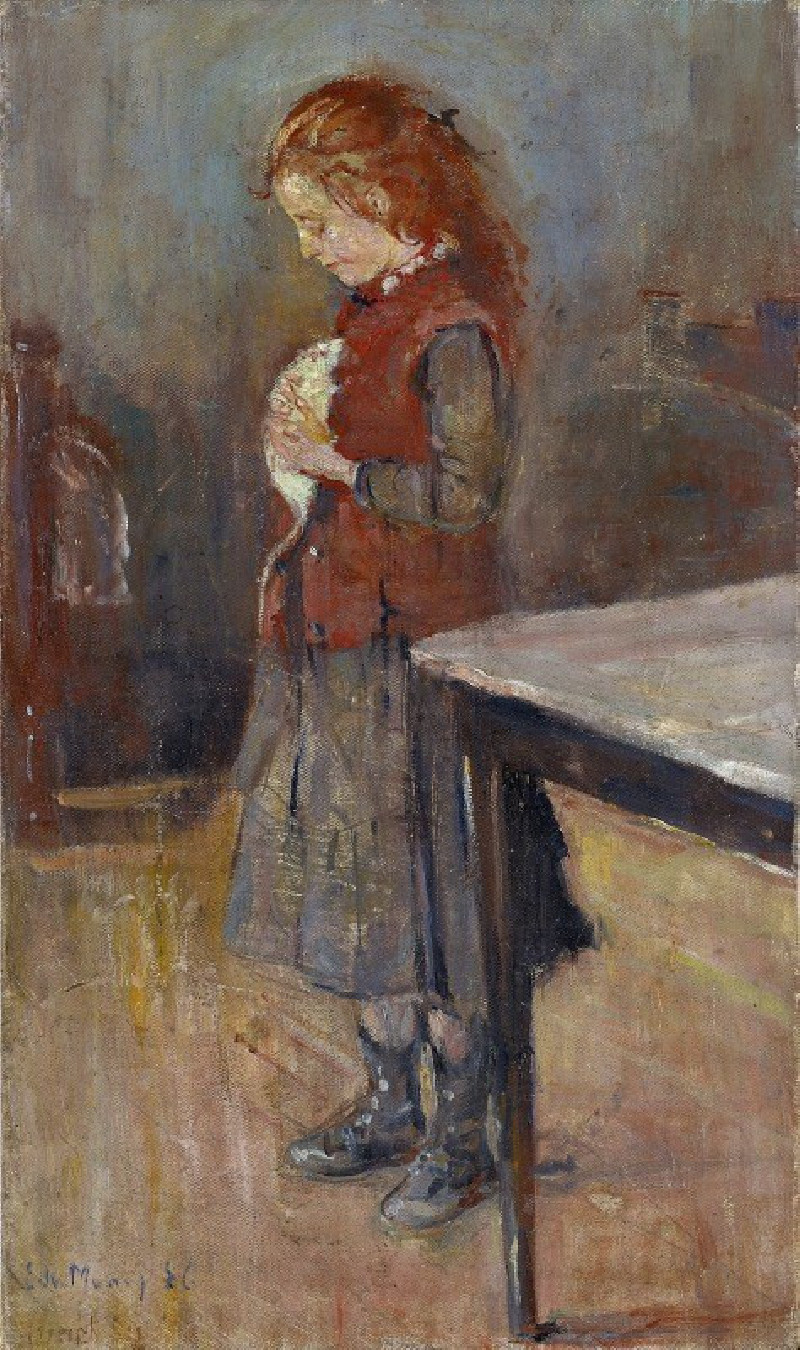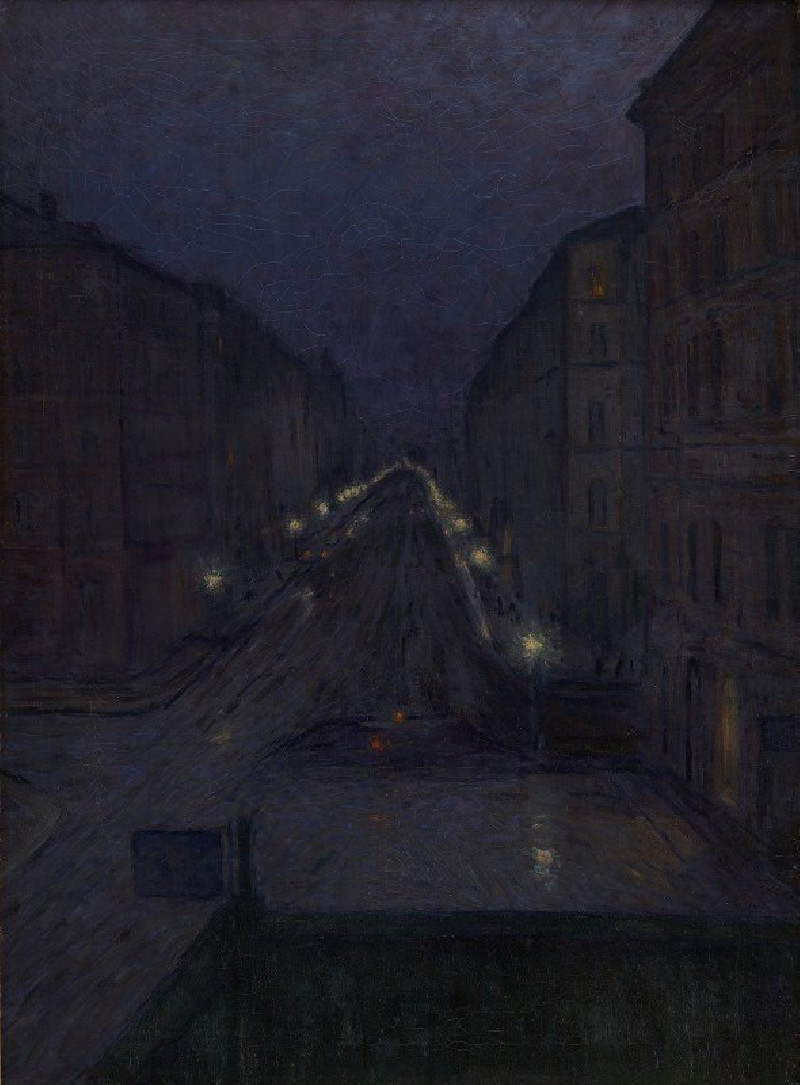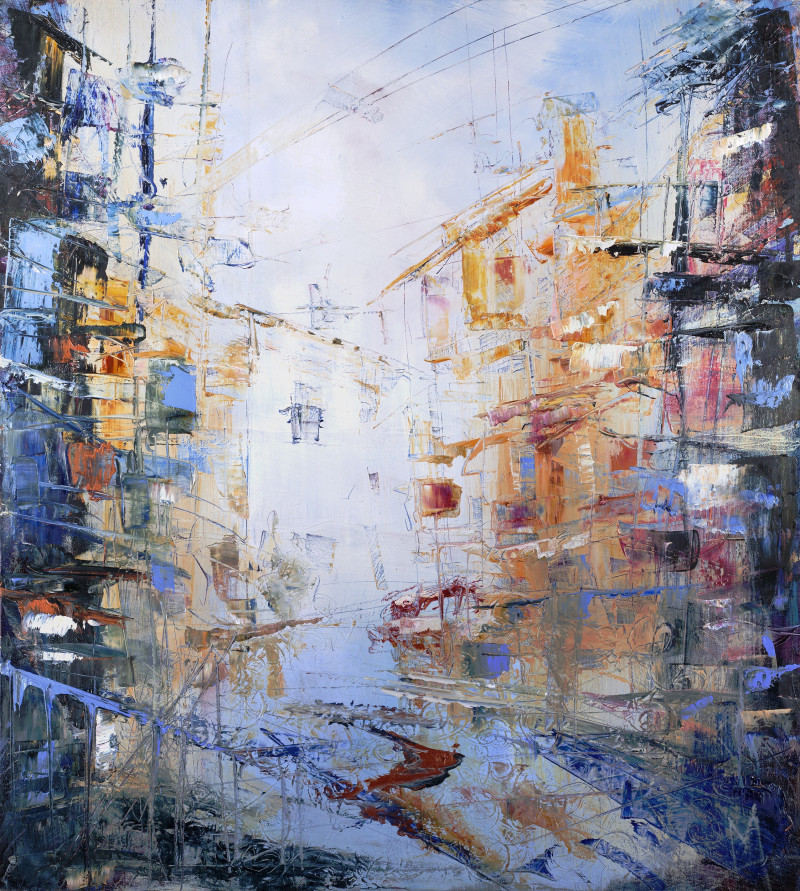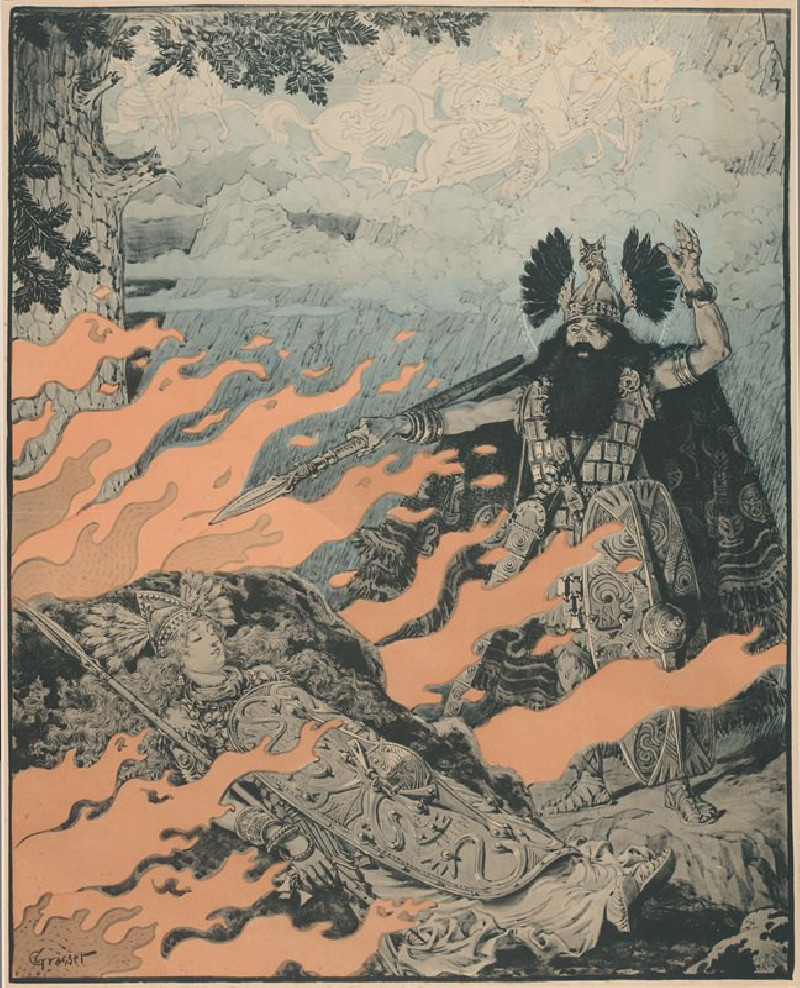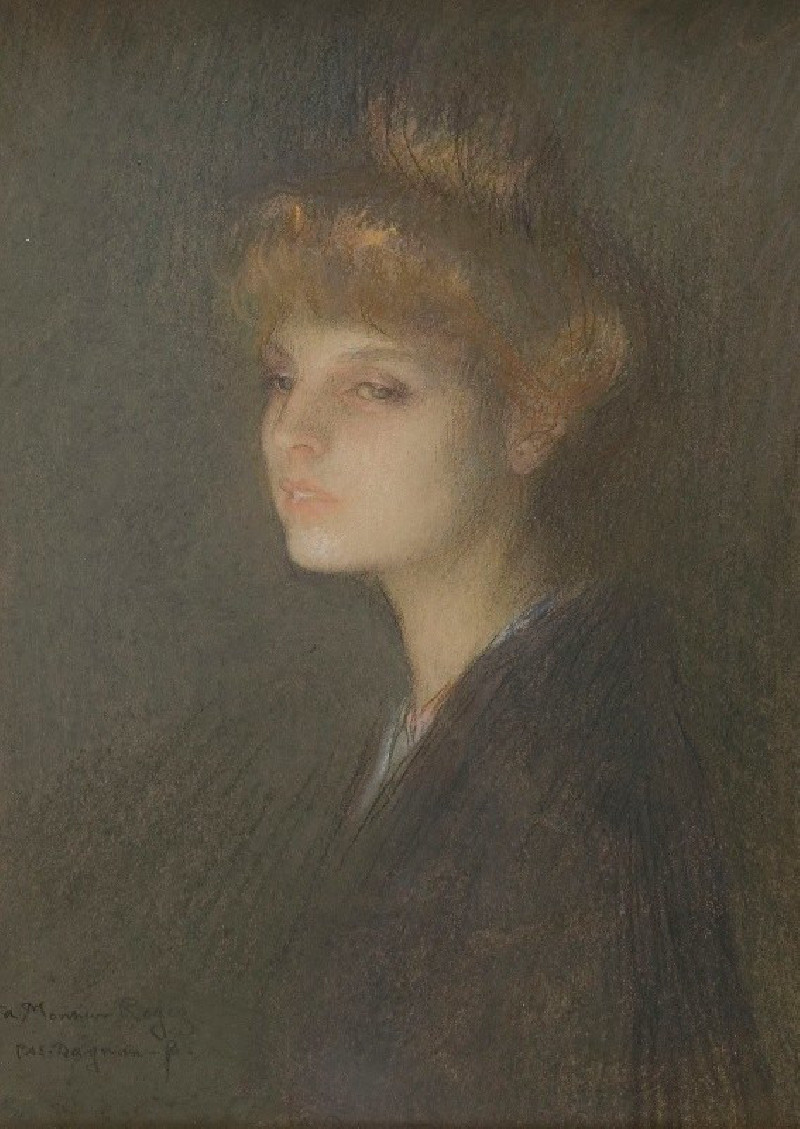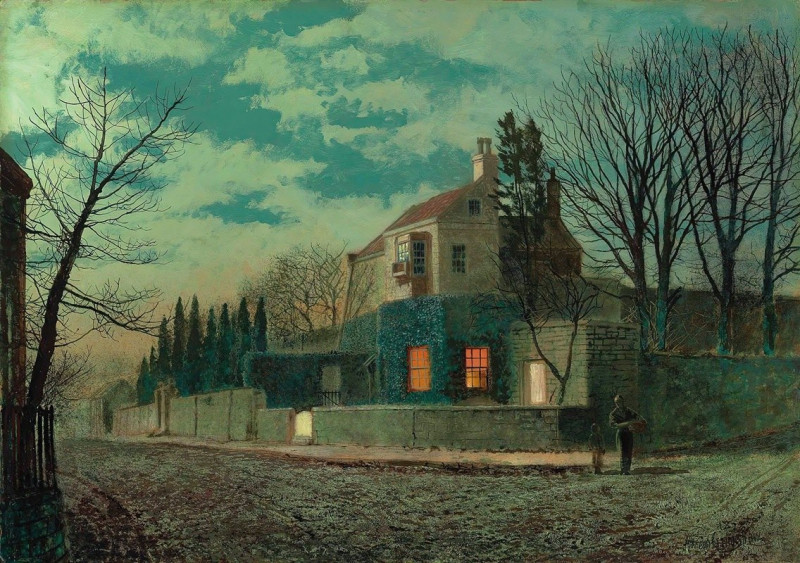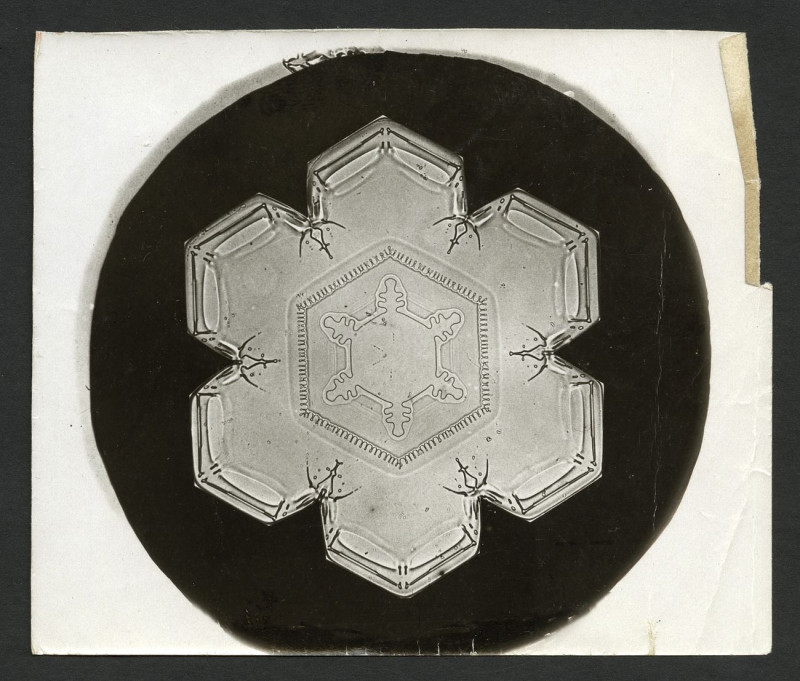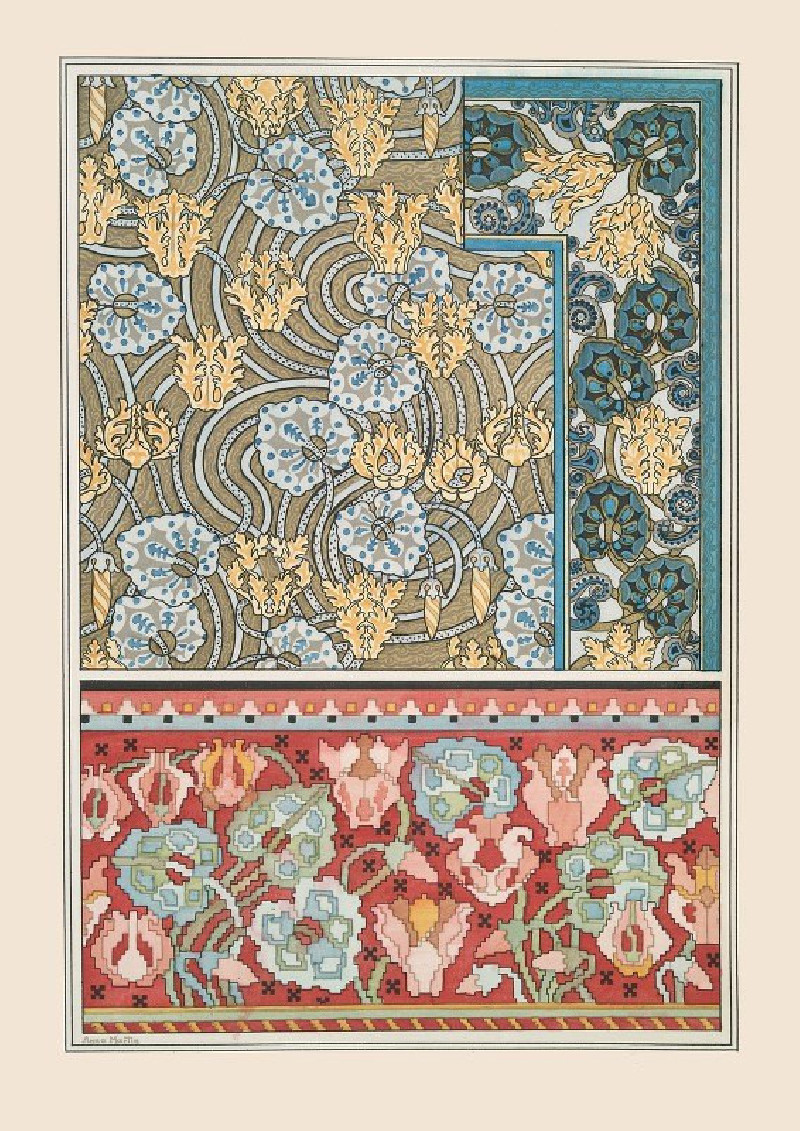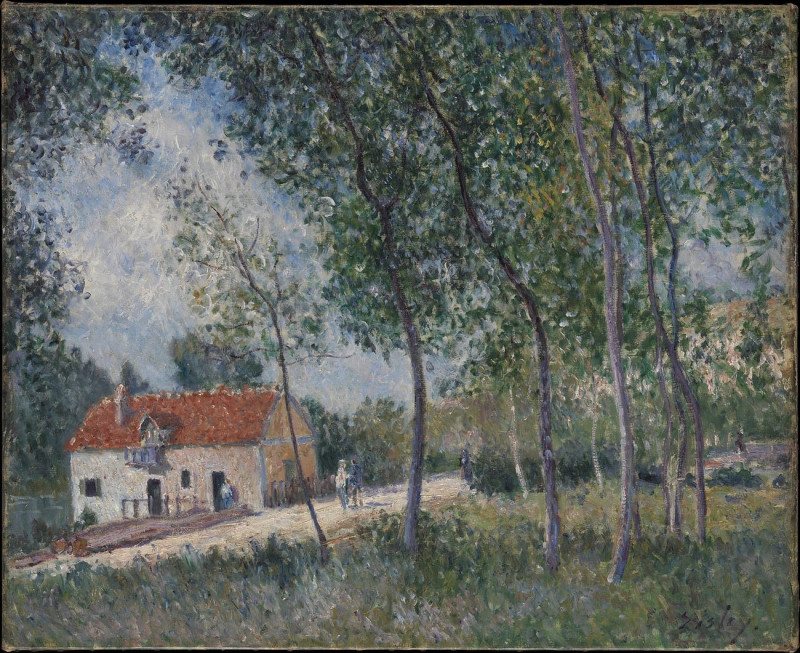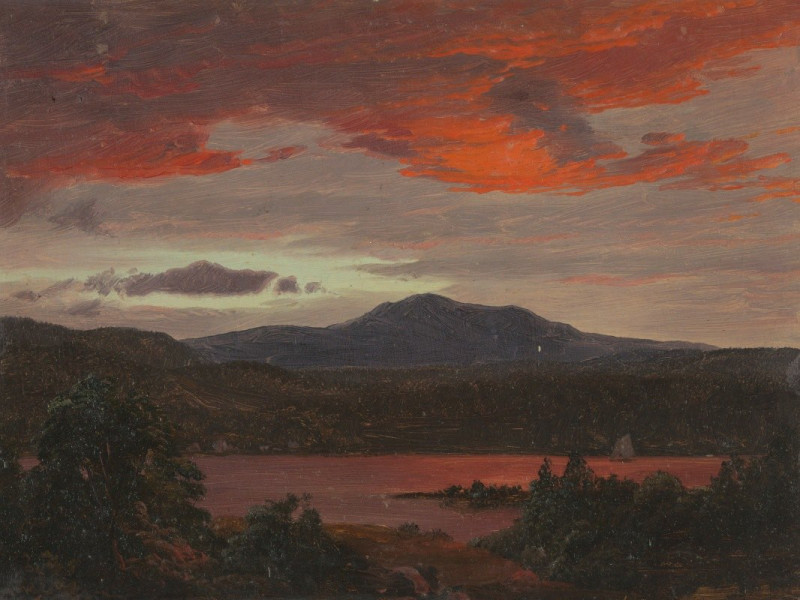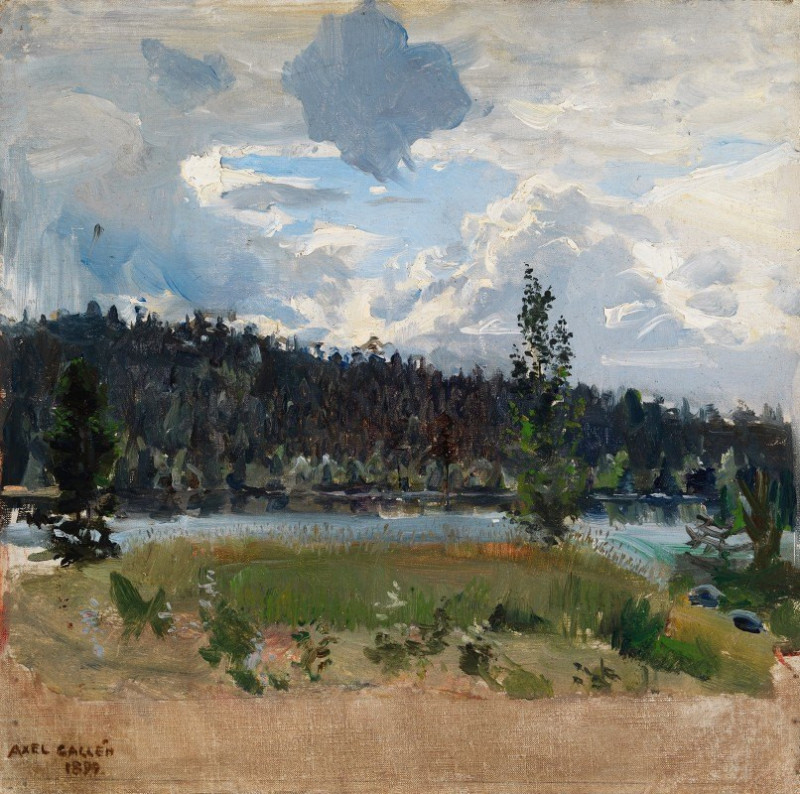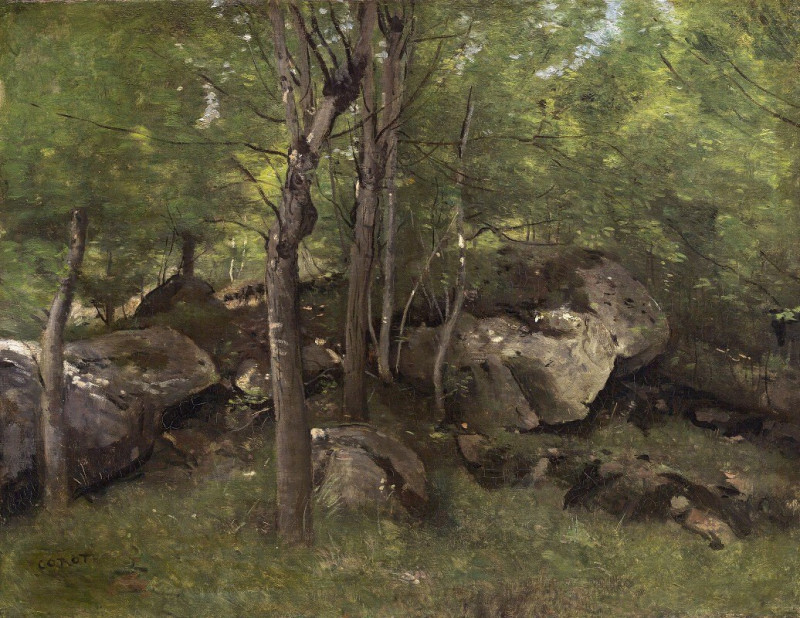Metabolism (1898–1899)
Technique: Giclée quality print
Recommended by our customers
More about this artwork
"Metabolism" by Edvard Munch, painted between 1898 and 1899, is a captivating and evocative piece that illustrates Munch's profound exploration of emotional and existential themes. The painting portrays two nude figures, a man and a woman, set against a dark, atmospheric backdrop of slender blue and green trees. This setting lends a mysterious, almost otherworldly feel to the scene.The female figure on the left stands passively with downturned gaze and flowing red hair that cascades down her back, her whole body slightly tilted towards the man. This posture might suggest contemplation or resignation. On the right, the male figure is depicted in a more dynamic pose, his arm raised and hand behind his head in a gesture that might indicate frustration or despair. His physical stance and facial expression convey a sense of angst or inner turmoil, contrasting with the stillness of the female figure.The choice of colors and the fluidity of the brush strokes create an intense emotional landscape that reflects the inner state of the figures. The dark tones of the forest suggest confinement or the weight of existential concerns, while the positioning and differing gestures of the figures could hint at themes of life, relationships, or the human condition itself.Overall, "Metabolism" is a powerful depiction of the human psyche, illustrating the complexity of emotions and interactions that define our existence. Munch's ability to convey deep emotional content through his distinctive expressionist style is evident in this haunting work.
Delivery
Returns
Edvard Munch (12 December 1863 – 23 January 1944) was a Norwegian painter. His best known work, The Scream (1893), has become one of Western art's most iconic images.
His childhood was overshadowed by illness, bereavement and the dread of inheriting a mental condition that ran in the family. Studying at the Royal School of Art and Design in Kristiania (today's Oslo), Munch began to live a bohemian life under the influence of the nihilist Hans Jæger, who urged him to paint his own emotional and psychological state ('soul painting'); from this emerged his distinctive style.

